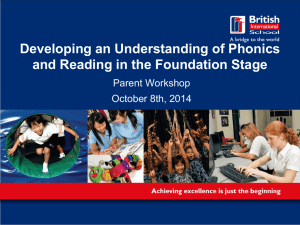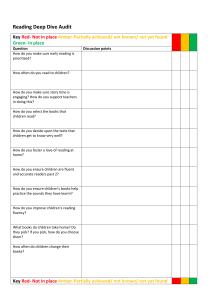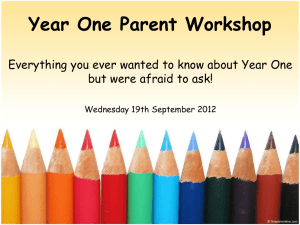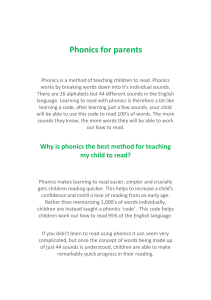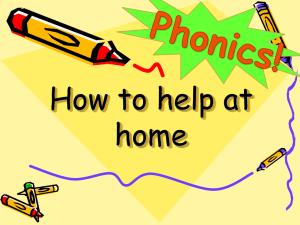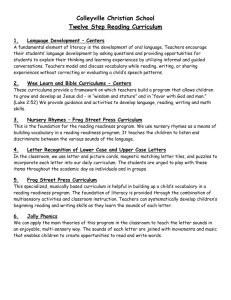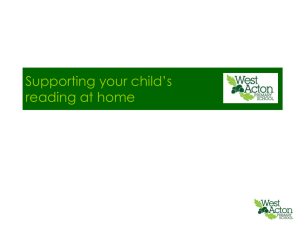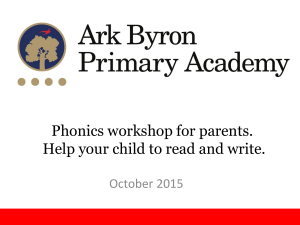Year 1 Phonics Screent Test PowerPoint
advertisement
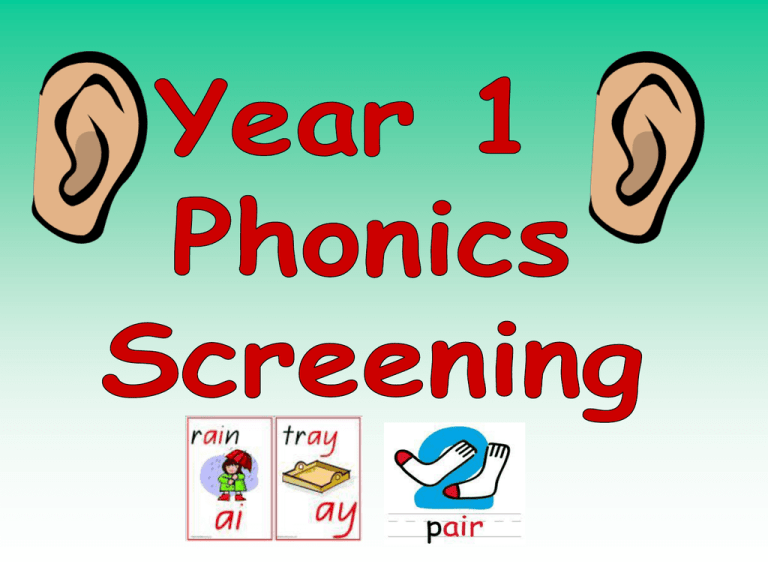
•Children are taught to read by breaking down words into separate sounds or ‘phonemes’. They are then taught how to blend these sounds together to read the whole word. •Children have a 20mins phonics lesson each day and they are encouraged to use these strategies to read and write in other lessons. •There are 44 different sounds. •Every Year 1 child in the country will be taking the phonics screening check in the same week in June. •The aim of the check is to ensure that all children are able to read by the end of year two. •This ‘midpoint check’ will ensure that we have a clear understanding of what the children need to learn in year 2. •The check is very similar to tasks the children already complete during phonics lessons. •Children will be asked to ‘sound out’ a word and blend the sounds together.eg d-o-g - dog •The focus of the check is to see which sounds the children know and therefore the children will be asked to read made up ‘nonsense’ words. THIS IS NOT A READING TEST •Only 33% of children in the pilot study scored enough to indicate they need no further support in year 2. It is therefore expected that this will be the case with some of the children in our school. •If your child does not reach the expected threshold they will re-do the phonics screening towards the end of Year 2. •The screening will take place throughout the a given week in June. The children cannot retake the test at any other time so it is very important your child is in school during this week. •You will be informed if your child has reached the threshold in a letter with your child’s report. •The check has been designed so that children of all abilities will be able to take part. •The children will complete the check one at a time in a quiet area of the school. •Their teacher will conduct all of the screening checks with the children. •The screening will only take 5-10mins with each child. •Encourage your child to ‘sound out’ when reading or writing. Focusing particularly on spotting more unusual sound patterns. Eg Digraph- 2 letters making one sound cow Trigraphs- 3 letters making one sound night Split digraphs- 2 vowels with a consonant inbetween. Use to be known as the magic e! spine - i_e •Encourage your child to use their sound mat when writing and use their actions to find the sound they need. •Children can practise their phonics by playing games online. E.g. Buried treasure •Website lists are available •http://www.phonicspla y.co.uk/BuriedTreasure 2.html •REMEMBER: Phonics is not the only thing needed to become a fluent reader. •Please continue to read with your child each night and encourage them to: •Sound out •Re-read to check it makes sense. •Use pictures for clues. •Ask questions about the book. •And most importantly ENJOY READING!


